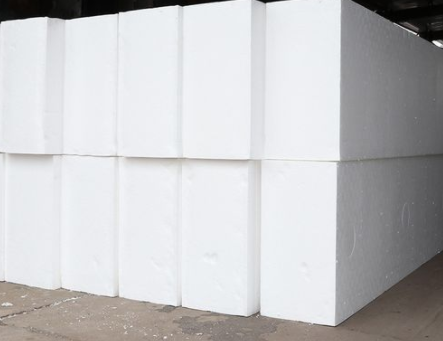- English
- Español
- Português
- русский
- Français
- 日本語
- Deutsch
- tiếng Việt
- Italiano
- Nederlands
- ภาษาไทย
- Polski
- 한국어
- Svenska
- magyar
- Malay
- বাংলা ভাষার
- Dansk
- Suomi
- हिन्दी
- Pilipino
- Türkçe
- Gaeilge
- العربية
- Indonesia
- Norsk
- تمل
- český
- ελληνικά
- український
- Javanese
- فارسی
- தமிழ்
- తెలుగు
- नेपाली
- Burmese
- български
- ລາວ
- Latine
- Қазақша
- Euskal
- Azərbaycan
- Slovenský jazyk
- Македонски
- Lietuvos
- Eesti Keel
- Română
- Slovenski
- मराठी
- Srpski језик
EPS is used as a building material
2022-02-21
The construction of road in permafrost area will change local environment, cause the thawing of permafrost, and cause serious diseases and even damage of road. The traditional methods of freezing damage control, such as pad, salt injection, soil change, slag spread, are not ideal.
Because the inner wall bubble of EPS material is closed, not connected to each other, water absorption rate is small, good frost resistance, to ensure that it still has good heat insulation performance under the condition of immersion. The EPS board insulation subgrade test (1990) on the Kunlun Mountain section of qinghai-Tibet Highway shows that the 6cm EPS insulation layer can reduce the heat flow from the surface to the deep layer, reduce the downward movement of the upper limit of the underground permafrost layer, slow down the freezing and thawing of the permafrost layer, maintain the stability of the line structure and reduce the deformation. The research results have been popularized and applied in chuma River approach, Hongliang River bridge approach and old hot spring area. From the status of the project, the road surface is solid and smooth, the roadbed is stable, and the overall strength of roadbed and road surface meets the design requirements.

1.2 Reduce subgrade settlement and prevent or treat subgrade instability
When embankment is built on soft soil foundation, because the density of ordinary filler is large, the additional stress of foundation produced by its dead weight is large, which often results in excessive uneven settlement and settlement amount of subgrade. Because EPS has the characteristics of low density and super light weight, after a certain depth of filling, it can effectively reduce the dead weight of embankment, reduce the additional stress of foundation, reduce the settlement of soft soil embankment and improve the stability of foundation. Filling EPS embankment with a height of 10m is approximately equivalent to the load of low-earth embankment with a height of 10cm, and the load of the embankment is greatly reduced. Therefore, building EPS embankment in the slope section can effectively prevent landslides and improve the anti-sliding stability of the high embankment.
EPS construction does not need special machinery, manpower can be constructed, fast speed, suitable for disaster relief, for large machinery is difficult to use the site is more suitable, can be site processing cutting, to adapt to the site terrain requirements. In Taizhou section of Ningbo-Taizhou-Wenzhou Expressway phase I project K42+650~K42+800 section, in August 1998, the soft soil subgrade collapsed due to fast filling, and the ground arch was 60cm. Due to the urgency of the construction period, the site was limited by the 104 National Road and the factory building outside, so EPS light material was finally used to fill the embankment. The thickest part was 6 layers, and the thinnest part was 1 layer, with a total amount of 7295m3. The embankment was completed in October of the same year. Since the end of 1998, the asphalt concrete pavement is smooth and in good condition.
1.3 Prevent vehicle jumping at bridge head and reduce lateral displacement of abutment
Due to the particularity of the bridge head (junction of abutment and roadbed), it is difficult to control the construction quality of roadbed filling, and the difference between the structure of abutment and embankment makes it easy to produce uneven settlement at the bridge head, which has a great impact on road life, driving comfort and safety. Reducing or controlling differential settlement at bridge head is a difficult problem in embankment construction on soft foundation. Due to the extremely light weight of EPS, it can be used as the filler at the bridge head to effectively reduce the settlement difference. At the same time, because of its good independence, it can greatly reduce the lateral pressure of embankment to abutment and reduce the lateral displacement of abutment.
The abutment of Xintianwei Bridge (bridge center pile no. K57+010) on both sides of Huzhou section of Hangzhou-Nanjing Expressway was displaced in the process of abutment backfilling. According to the construction period and the foundation treatment, EPS light embankment treatment scheme is adopted. The length of EPS embankment at both ends of Xintian Wei Bridge is about 22m, and the filling thickness changes from 6 layers (layer thickness is 48.5cm) to 1 layer step by step from abutment, with a total amount of 2332m3. The EPS project began construction in March 2000, and was completed in May, and opened to traffic at the end of the same year. At present, the asphalt concrete pavement is in good condition, and the bridge section has no jumping phenomenon.

1.4 Erect embankment shall be constructed
In mountainous steep slope area and urban road construction, the vertical embankment can be built with the characteristics of strong self-reliance and small lateral deformation of EPS in order to reduce the occupation and increase the appearance. For highway engineering expansion, EPS can not only reduce the differential settlement caused by the splicing of new and old roads, but also put steep slopes, or even make vertical slopes, which is very beneficial to reduce secondary land acquisition and save precious land resources.
1.5 Minimize the impact on underground or adjacent buildings
The uneven settlement of the upper soil mass and the soil mass on both sides of the rigid structure buried under the embankment will often produce excessive additional pressure on the top of the structure, the vertical earth pressure coefficient can reach 1.2, and even 2.0 when the soil is higher, that is, there is stress concentration at the top of the structure, resulting in the cracking and destruction of the underground structure. The stress distribution on the structure can be improved by EPS instead of filling the top of the structure, and the earth pressure coefficient can be reduced to 0.3.

